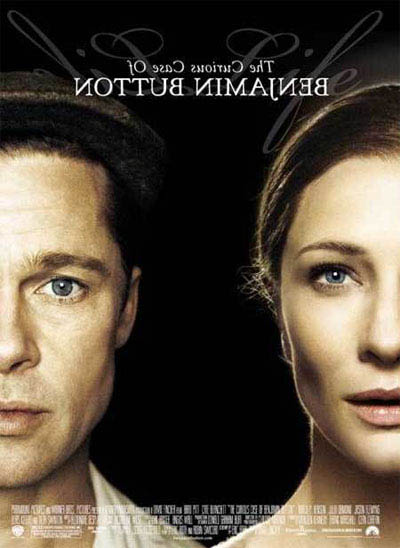 “The Curious Case of Benjamin Button,” loosely based on a short story by F. Scott Fitzgerald, is a visually exquisite fantasy about a man born old and who grows younger.
“The Curious Case of Benjamin Button,” loosely based on a short story by F. Scott Fitzgerald, is a visually exquisite fantasy about a man born old and who grows younger.Where the story it was based on was a farce, the film is sober meditation on the process of living and a tragic love story. That makes the film seem awfully bleak. It isn’t. There are flashes of humor in the screenplay by Eric Roth that keep the film from being a complete downer.
Roth has written the scripts for “Munich,” “Ali” and “The Insider” among other films, but his most relevant work in connection with “Benjamin Button” is his adaptation of “Forrest Gump.” Both films focus on the life of one man, the people he encounters and ultimately the woman he loves.
The film is long — it clocks in at nearly three hours — and is slow. In a lot of cases these could be seen as criticisms, and for some people they will be negatives for the film, but patient viewers will be rewarded for their time. You want to spend time with the film's characters. As the film came to its conclusion, in spite of the length, I didn’t want it to end.
Benjamin Button is born a wrinkled infant with all the ailments of a not-well elderly man. As a child he is a wheelchair bound 80-year-old man. Early in the film Benjamin meets Daisy, a young girl around his true age that intrinsically can sense that he is not as old as he looks.
This sets up the film’s central love story as the two characters go their separate ways until they "meet in the middle” of their lives. Except for scenes where Benjamin is an infant and a child, Brad Pitt stars as the title character. Cate Blanchett stars as the adult Daisy. Both actors are in excellent form and Pitt’s performance needs to be seen to believe.
There are wonderful interludes before returning to the main love story. As Daisy goes off to become a dancer, Benjamin in his 20s/60s works on a tug boat that eventually is recruited for duty in World War II. His captain is played in by the wonderfully over-the-top and funny Jared Harris (“Igby Goes Down”).
In a nice sequence Benjamin has a short affair with a married woman (Tilda Swinton, “Michael Clayton”) in London. There’s a lovely sequence set in France that plays like a self-contained short film on chance. There are strong, affecting performances from Jason Flemying (“Stardust”) as Benjamin’s father and Taraji P. Henson (“Talk to Me”) as Benjamin’s adopted mother.
On a technical level, the film is nothing short of astounding. The aging process for both Pitt and Blanchett is wholly convincing. For Pitt, in the early scenes, it is a seamless combination of computer enhanced visuals and make up. Not only does Pitt look 80, but he looks to be less than 5 feet tall. There’s never a moment you doubt it.
The director is David Fincher whose work, which includes, “Seven,” “Fight Club,” “Panic Room” and “Zodiac,” has always been visually compelling. This is his most ambitious project in terms of sheer scope and he delivers.
His detractors often accuse Fincher of relying to heavily on overly stylized visuals. In the past, he experimented with different visual trickery and he still is in “Benjamin Button,” but now it is less obvious and more subtle. The film begins in 1918 and goes on up through 2003. The period detail throughout always seem spot on.
The cinematography by Claudio Miranda paired with the art direction by Kelley Curley, Randy Moore and Tom Reta is often breathtakingly beautiful. Visuals like a sunset on a peer leave a lasting impression in the mind.
The film isn’t perfect. There’s a story frame involving Daisy’s daughter (Julia Ormond) reading Benjamin’s memoir to her mother on her deathbed. This is fine, but the detail that Hurricane Katrina is bearing down on the hospital feels unnecessary.
Some have complained that there is nothing to the Benjamin character beyond the extraordinary circumstances of his life. Benjamin seems content to just wait for the time when he can be with Daisy. It is a sad, but hopeful tale in many respects and in the end that’s what rings most true.
 Jim Carrey is a take him or leave him sort of performer. He has legions of fans who adore him, but maybe just as many who can’t stand him. For fans, “Yes Man” will be a pleasurable diversion, but it is unlikely to win over non-fans.
Jim Carrey is a take him or leave him sort of performer. He has legions of fans who adore him, but maybe just as many who can’t stand him. For fans, “Yes Man” will be a pleasurable diversion, but it is unlikely to win over non-fans. To be perfectly blunt, the remake of the 1951 sci-fi classic “The Day the Earth Stood Still” is dull, dull, dull. That’s right, that is three dulls, so in a way it is a bargain: Viewers get three times the boredom for the price of one ticket. How’s that for an endorsement?
To be perfectly blunt, the remake of the 1951 sci-fi classic “The Day the Earth Stood Still” is dull, dull, dull. That’s right, that is three dulls, so in a way it is a bargain: Viewers get three times the boredom for the price of one ticket. How’s that for an endorsement? “It’s a Wonderful Life” has become a Christmas standard along side such films as “A Miracle on 34th Street” and “A Christmas Story,” but it is not the only Christmas themed Jimmy Stewart film available. “The Shop Around the Corner,” released in 1940, is a warm, funny romantic comedy that is just as worthy of being a Christmas classic.
“It’s a Wonderful Life” has become a Christmas standard along side such films as “A Miracle on 34th Street” and “A Christmas Story,” but it is not the only Christmas themed Jimmy Stewart film available. “The Shop Around the Corner,” released in 1940, is a warm, funny romantic comedy that is just as worthy of being a Christmas classic.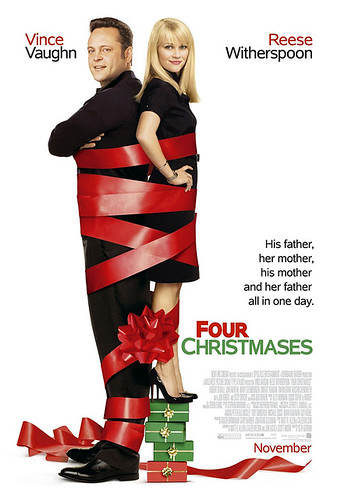 Christmas has many traditions: the Christmas tree, egg nog, mistletoe, stockings hung with care, cookies and milk left out for Santa and so on. “Four Christmases,” following on the heels of last year’s “Fred Claus,” may be the beginning of a new tradition: the annual Vince Vaughn Christmas comedy.
Christmas has many traditions: the Christmas tree, egg nog, mistletoe, stockings hung with care, cookies and milk left out for Santa and so on. “Four Christmases,” following on the heels of last year’s “Fred Claus,” may be the beginning of a new tradition: the annual Vince Vaughn Christmas comedy.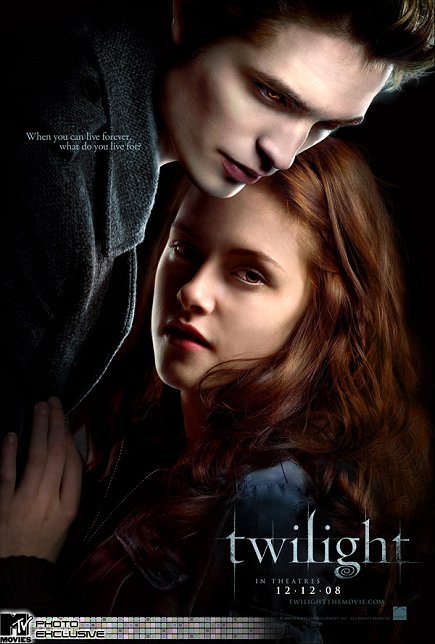 “Twilight” was a guaranteed hit. The adaptation of Stephenie Meyer’s immensely popular book about forbidden love between a vampire and a human had a huge built-in audience that was going to come out no matter what. Here was an opportunity to try to make something with an edge that could still make money. Leave it to Hollywood to not take the risk.
“Twilight” was a guaranteed hit. The adaptation of Stephenie Meyer’s immensely popular book about forbidden love between a vampire and a human had a huge built-in audience that was going to come out no matter what. Here was an opportunity to try to make something with an edge that could still make money. Leave it to Hollywood to not take the risk. “Quantum of Solace,” the 22nd James Bond film, is the first direct sequel in the franchise’s 46 years. It marks a different direction for the series as it moves away from formula to try to create a new Bond universe.
“Quantum of Solace,” the 22nd James Bond film, is the first direct sequel in the franchise’s 46 years. It marks a different direction for the series as it moves away from formula to try to create a new Bond universe. Today the 22nd official James Bond movie, “Quantum of Solace” arrives in theaters. I am not among the privileged elite who have already seen it, so for now I want to take a look back at agent 007.
Today the 22nd official James Bond movie, “Quantum of Solace” arrives in theaters. I am not among the privileged elite who have already seen it, so for now I want to take a look back at agent 007.  “Zack and Miri Make a Porno” has caused a bit of stir with just its name. Around the country some newspapers and advertisers have refused to run the full title and a multiplex chain in Utah banned the film.
“Zack and Miri Make a Porno” has caused a bit of stir with just its name. Around the country some newspapers and advertisers have refused to run the full title and a multiplex chain in Utah banned the film.  10. “Young Frankenstein” (1974)
10. “Young Frankenstein” (1974) 9. “Frankenstein” (1931)
9. “Frankenstein” (1931) 8. “Dracula” (1931)
8. “Dracula” (1931) 7. “Silence of the Lambs” (1991)
7. “Silence of the Lambs” (1991) 6. “Ghostbusters” (1984)
6. “Ghostbusters” (1984) 5. “Rocky Horror Picture Show” (1975)
5. “Rocky Horror Picture Show” (1975) 4. “Night of the Living Dead” (1968)
4. “Night of the Living Dead” (1968) 3. “Halloween” (1978)
3. “Halloween” (1978) 2. “The Exorcist” (1973)
2. “The Exorcist” (1973)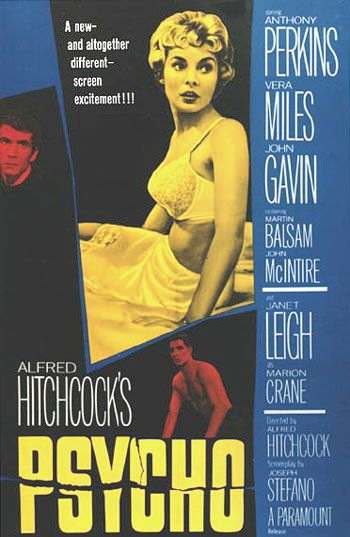 1. “Psycho” (1960)
1. “Psycho” (1960) 20. "Freaks" (1932)
20. "Freaks" (1932)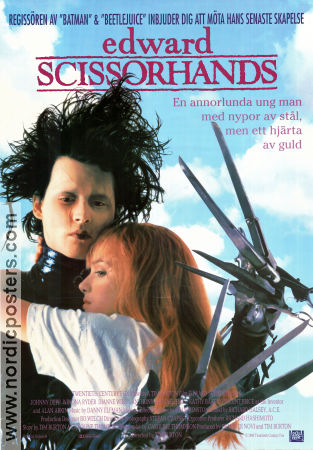 19. “Edward Scissorhands” (1990)
19. “Edward Scissorhands” (1990) 18. "Rosemary's Baby" (1968)
18. "Rosemary's Baby" (1968) 17. "Beetlejuice" (1988)
17. "Beetlejuice" (1988) 16. "A Nightmare on Elm Street" (1984)
16. "A Nightmare on Elm Street" (1984) 15. “Alien” (1979)
15. “Alien” (1979) 14. “Jaws” (1975)
14. “Jaws” (1975) 13. "The Evil Dead" (1981)
13. "The Evil Dead" (1981) 12. "The Shining" (1980)
12. "The Shining" (1980) 11. "The Wolf Man" (1941)
11. "The Wolf Man" (1941) 30. "The Omen" (1976)
30. "The Omen" (1976) 29. “Pan’s Labyrinth” (2006)
29. “Pan’s Labyrinth” (2006) 28. “The Birds” (1963)
28. “The Birds” (1963) 27. “Topper” (1937)
27. “Topper” (1937) 26. “Interview With The Vampire” (1994)
26. “Interview With The Vampire” (1994) 25. “The Wicker Man” (1973)
25. “The Wicker Man” (1973) 24. "28 Days Later" (2003)
24. "28 Days Later" (2003) 23. “Sweeney Todd” (2007)
23. “Sweeney Todd” (2007) 22. "Carrie" (1976)
22. "Carrie" (1976) 21. "Texas Chainsaw Massacre" (1974)
21. "Texas Chainsaw Massacre" (1974) Woody Allen has increasingly become an acquired taste, but his latest film “Vicky Cristina Barcelona” — his first film set in Spain — may prove to hit the spot for those who never appreciated his work in the past.
Woody Allen has increasingly become an acquired taste, but his latest film “Vicky Cristina Barcelona” — his first film set in Spain — may prove to hit the spot for those who never appreciated his work in the past. 40. “An American Werewolf in London” (1981)
40. “An American Werewolf in London” (1981) 39. “Audition” (2000)
39. “Audition” (2000) 38. "The Fly" (1986)
38. "The Fly" (1986) 36. “Rebecca” (1940)
36. “Rebecca” (1940) 35. “The Addams Family” (1991)
35. “The Addams Family” (1991) 34. “Scream” (1996)
34. “Scream” (1996) 33. “Invasion of the Body Snatchers” (1956)
33. “Invasion of the Body Snatchers” (1956) 32. “Poltergeist” (1982)
32. “Poltergeist” (1982) 31. “Shaun of the Dead” (2004)
31. “Shaun of the Dead” (2004)